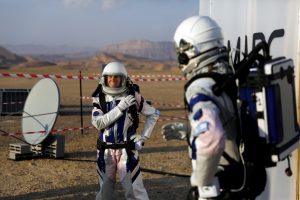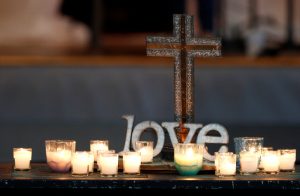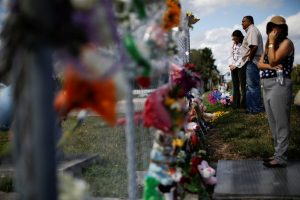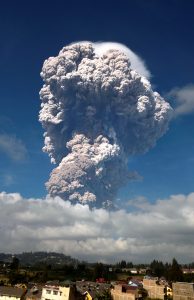
By Robin Emmott and Andrea Shalal
MUNICH (Reuters) – European and U.S. officials divided over U.S. President Donald Trump’s foreign policy found common cause this weekend in decrying what they say is Russia’s covert campaign to undermine Western democracies.
But despite the transatlantic show of anger at Russia during the Munich Security Conference, Western officials and diplomats also acknowledged an uncomfortable truth: that Russia is critical to resolving many of the world’s worst conflicts.
From eastern Ukraine to North Korea, Russia’s status as a nuclear power, its military intervention in Syria and its veto on the United Nations Security Council mean any diplomacy must ultimately involve Moscow, officials said.
“We can’t find a political solution without Russia,” Norwegian Defence Minister Frank Bakke Jensen told Reuters. “We need to reach a point where we can work to find a political solution, and they must be central to that.”
Publicly at least, Russia was the bad guy in Munich, roundly criticized for interfering in the 2016 U.S. presidential campaign after the U.S. indictment of 13 Russians this week, and more broadly for its 2014 annexation of Ukraine’s Crimea.
For the West, such unity of purpose marked a change after a year of Trump’s “America First” rhetoric, his inconsistent statements on NATO and the European Union, his decision to pull out of the Paris climate change accord and his move not to certify Iran’s compliance with the 2015 nuclear deal.
At the annual Munich event, a rare gathering of European and U.S. security officials that also attracts top Russian diplomats, American policymakers were visibly irritated with Moscow’s public denials of accusations of meddling.
“I am amazed that … the Russians come, they send someone, every year to basically refute the facts,” U.S. Director of National Intelligence Dan Coats said of the Russian presence at the event.
But behind the scenes, diplomats said there was a different tone, as top officials including NATO Secretary-General Jens Stoltenberg met Russian Foreign Minister Sergei Lavrov in the gold-and-white paneled rooms of the Bayerischer Hof hotel.
“There is a diplomatic network that works,” said Russian senator Aleksey Pushkov, citing contacts to resolve the Syrian civil war including Moscow, Ankara, Washington and Tel Aviv. “It’s something that, if used efficiently, can prevent bigger confrontations.”
German Foreign Minister Sigmar Gabriel met several times with Lavrov, offering the prospect of easing economic sanctions imposed over Moscow’s role in eastern Ukraine and calling Russia an “indispensable” partner in global efforts to prevent proliferation of nuclear weapons.
Former U.S. Secretary of State John Kerry, who negotiated the 2015 accord curbing Iran’s nuclear ambitions, said the West needed to “compartmentalize” issues with Moscow, so that diplomacy could achieve more.
“IN RUSSIA’S HANDS”
Part of the challenge for the West is that international crises have been interlinked.
Russia is allied to Israel’s nemesis Iran in Syria while Moscow’s support for separatists in Ukraine draws NATO’s ire.
But NATO-ally Turkey is seeking to complete an arms deal to buy Russian air defenses. It has struck U.S-backed Kurdish forces in northern Syria with Russia’s blessing.
In Asia, U.S. efforts to stop North Korea’s atomic weapons development rest partly on Moscow’s willingness to countenance a U.S. and European call for an oil embargo on Pyongyang, which it has so far rejected.
“A few years ago you could talk about distinct crises, but today, if you’re discussing one, you’re shaking all the others,” Norway’s Jensen said.
So as Israel’s Prime Minister Benjamin Netanyahu railed against Iran in Munich on Sunday, in New York, British, U.S. and French efforts to condemn Tehran at the United Nations immediately ran into Russian resistance, diplomats told Reuters.
And in Munich, while U.S. and European officials saw momentum for U.N. peacekeepers in eastern Ukraine to resolve the four-year-old conflict there, U.S. special envoy Kurt Volker conceded everything rested on Moscow.
“It’s in Russia’s hands,” Volker told a gathering of EU and U.S. officials, including Sweden’s defense chief, who offered his country’s troops for any such mission.
Nine years ago in Munich, then U.S. Vice President Joe Biden promised to “reset” relations with Russia, but few in the West appeared to realize the depth of Russia’s resentment over the break-up of the Soviet Union and NATO’s eastward expansion.
Now, with Western economic sanctions in place on Russia over its 2014 annexation of Crimea and its support for rebels in eastern Ukraine, East-West ties are at their lowest since the Cold War, with little chance of an improvement, diplomats said.
(Reporting by Robin Emmott and Andrea Shalal; Editing by Catherine Evans)













